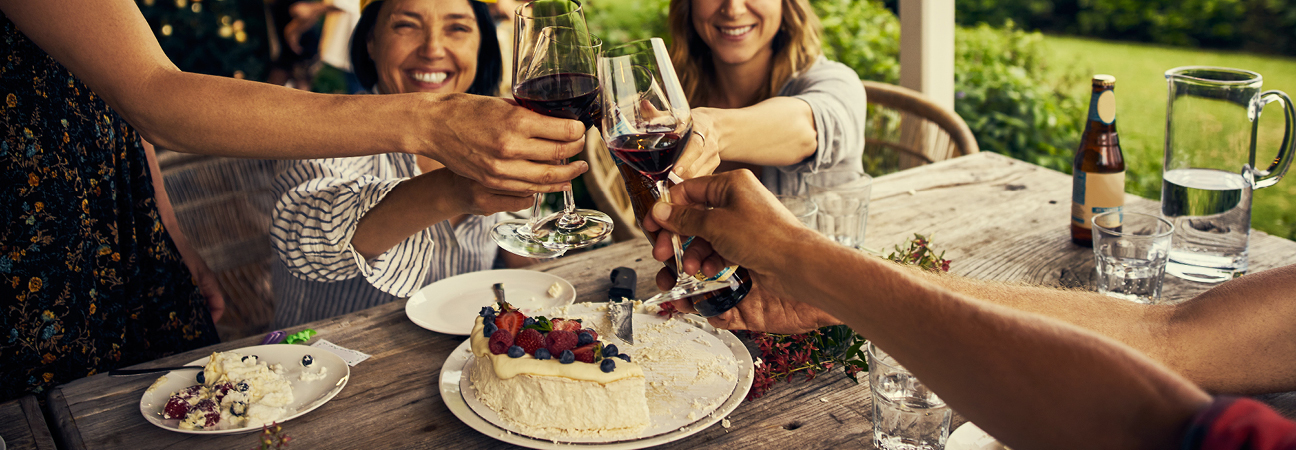Food safety on Christmas Day and beyond

Delicious food and good cheer are the wonderful parts of Christmas, but food poisoning is definitely not. Yet every year emergency departments around the country see some very sick people who have eaten food which has not been cooked or stored safely, or has spent too much time on the buffet. Read on for the simple rules about keeping your guests safe.
Keep it cool
Christmas in Australia means summer, and high temperatures provide the perfect conditions for bacteria to grow in food. Here are our tips for keeping food safe:
- Select your refrigerated items last when shopping, pack them into cool bags with icebricks (our zip-up Hill Street insulated cool bags are great for this!) and head home right away. Try to keep your car cool and don’t park in the sun. Put your groceries in the fridge and freezer as soon as you can.
- Your fridge should be kept at between 3C and 5C. Don’t overload your fridge as air will not circulate properly and the temperature will rise. Many fridges have a dial you can turn to decrease the temperature.
- If your fridge is too full, take out the alcohol, soft drinks and condiments. Drinks can be kept cool in an eski and pickles, jams and other acidic condiments are ok out of the fridge for the day.
- Never put hot food in the fridge as this will raise its temperature.
- If using foods at Christmas that have been frozen, defrost them slowly in the normal part of your fridge. This may take more than 24 hours for larger items so take them out in enough time. Ensure they are completely defrosted in the middle before cooking.
- Keep raw meat and fish on the lowest shelves in the fridge so that any juices won’t drip on to other things and contaminate them. They should be well-wrapped to prevent any leakage.
- The danger zone for bacterial growth is food temperatures of between 5C and 60C, so prepare foods as close as possible to eating time and don’t leave food out for more than two hours at room temperature.
- Put away the buffet early. You might be in a food coma after lunch but it’s important to re-refrigerate any meat, fish, rice dishes, dips, salads and other perishable foods promptly. If any of these have been out of the fridge for more than two hours, they should be discarded.
Storing and reheating leftovers
- Don’t leave uneaten food out of the fridge for more than two hours.
- When storing leftovers, portion them up into smaller single-meal containers so you are not reheating foods twice, which encourages bacterial growth.
- You should be especially careful when storing cooked rice. Bacterial spores present in uncooked rice aren’t destroyed by cooking and if left at room temperature, can rapidly multiply. So serve rice as soon as it has been cooked. If you are using cold cooked rice in a salad for example, make sure that it is cooled as quickly as possible and then kept in the fridge for no more than 24 hours before using. It should be discarded after the meal if already refrigerated for 24 hours.
- When reheating rice or any previously cooked food, make sure that it is hot all the way through to the point of steaming (at least 75C), and don’t reheat more than once.
Chicken and turkey
- Cover and cool before refrigerating, and store for a maximum of three days.
- You can freeze cooked poultry. Don’t refreeze uncooked frozen poultry that has been thawed. Cook it, and then freeze it if you don’t want it to go to waste.
Red meat
- Can be refrigerated and eaten cold within three days.
- If reheating, bring to room temperature and then re-warm in a frypan. Microwaving can affect the texture of red meat, making it very chewy.
Christmas ham
- Soak a ham bag (you’ll get one if you ordered a Christmas ham from Hill Street) a pillowcase, or a large tea towel in a solution of 1L of water and 1 cup of vinegar, wring out, place the whole leg inside and refrigerate.
- Resoak it every three days or so, so the ham doesn’t dry out in the fridge.
- Your ham will last up to two weeks stored this way.
- You can freeze ham for up to a month. Cut off chunks of the ham and wrap them in foil before freezing. The bone can also be frozen for use later in a pea and ham, or ham hock soup.
Seafood
- After purchase, prawns should be kept in an airtight container and kept in the coldest part of the fridge, with the shells left on as long as possible.
- Double check your fridge temperature is below 5C.
- Eat prawns, mussels and other fish within 3 days of purchase.
- Eat opened oysters within 24 hours of purchase, and don’t eat oysters that are dry or sunken in their shell.
- Don’t eat raw fish, opened oysters, prawns, mussels or any other seafood if it has been out of the fridge for more than 2 hours. So keep an eye on the time if you have seafood out on platters, and store it promptly.
Potatoes
- All cooked potatoes can be kept in the fridge for up to three days. To remain crisp on the outside, roast potatoes can be warmed in an oven or a dry frying pan.
Salads
- Leafy salads don’t keep well and should really be discarded after the meal.
- A potato salad will be ok for three days in the fridge.
- A rice or grain salad can be kept refrigerated for one day in the fridge if the rice was cooked right before serving, and then discarded. If it was previously cooked and refrigerated, it should be discarded.

